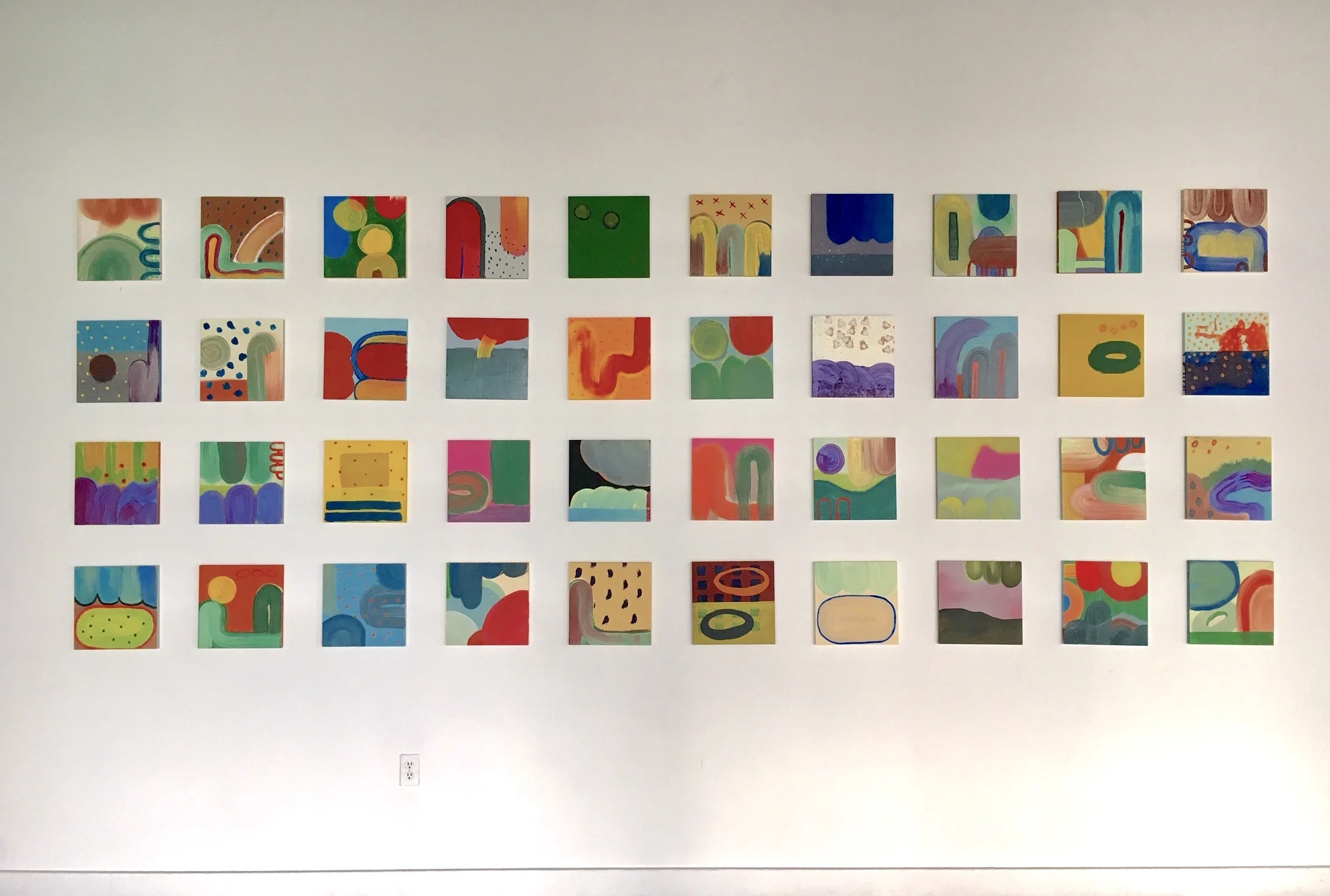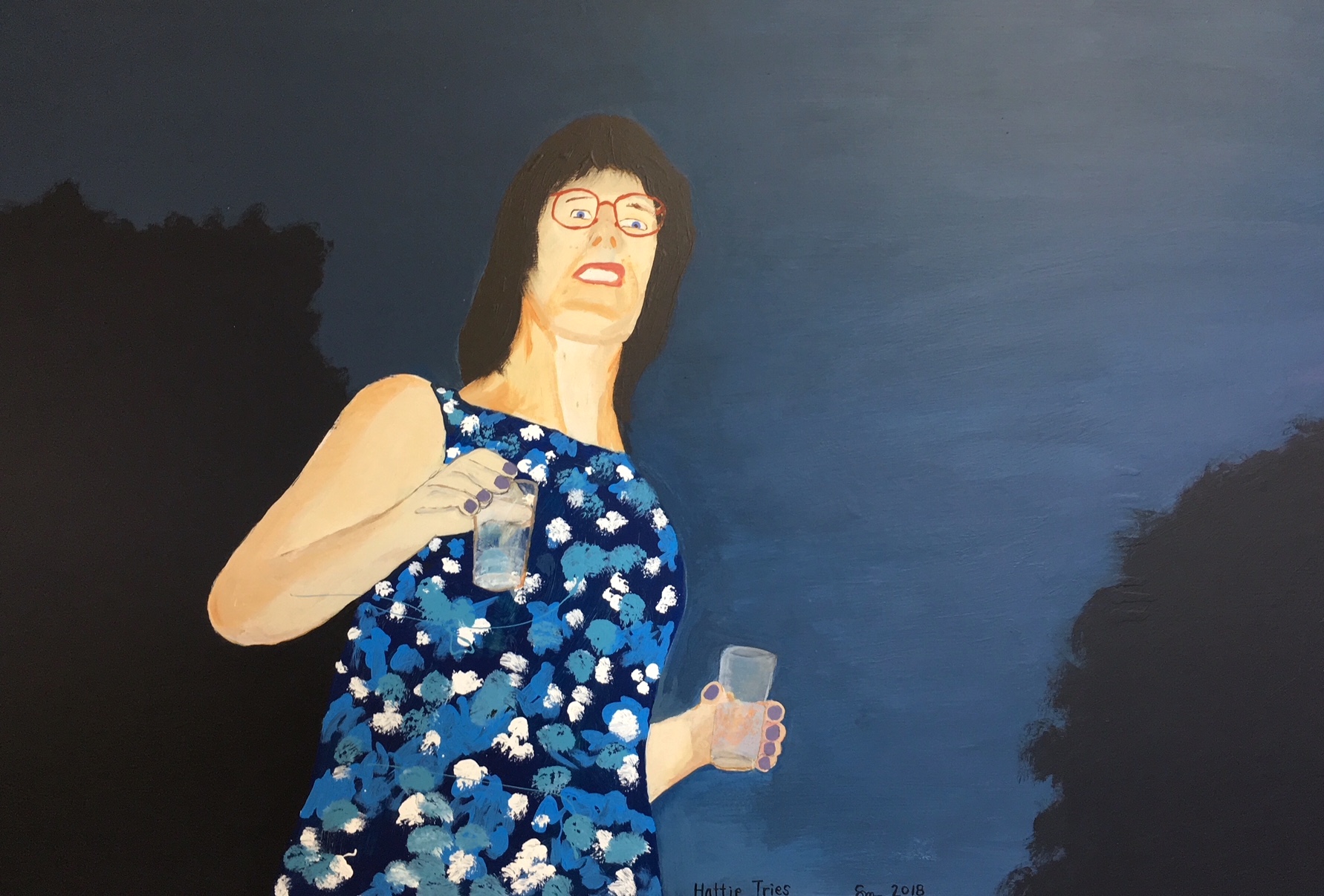room for painting room for paper, San Francisco CA, January 8 - February 9, 2009
George Lawson was intrigued by these & other drawings that I'd made in 1960 & 1962, when I was four & six years old. He chose about two dozen, had them framed & exhibited them as the "paper" half of the third exhibit in his gallery at 49 Geary; paintings by Chris Ashley were shown in the adjoining "room for painting." Later George moved his gallery a couple times & rebranded it as the George Lawson Gallery.
Here is an excerpt from George's essay for the exhibition catalogue:
For the third installation in the room for paper, we’re showing early work—quite early in fact—of MacLeod’s, pencil and colored pencil drawings he did between the ages of four and six as a response to the world while living abroad with his parents. We’re treating the show as just that: early work by a mature artist. MacLeod defies easy categorization as a creative person. He is a maker of objects, a publisher of books, a performer, and a keen and compassionate social critic. A brief perusal of his bio will show that he has lived his life in such a way as to reach back and validate this precocious accomplishment in a manner few could. Any questions raised by showing a child’s art in a commercial gallery are assuaged by the fact that these renderings are simply very good drawings by any standards, from the deft sensitivity of the line to the economy of handling to the unhinged titles MacLeod later gave the works, such as Cowboy Jumps Statue, Angry at Snowman, and The Trouble I Had. Scott MacLeod’s unfiltered gestures in pencil on paper from 1960 and 1962 reveal an already differentiated perception of the world, presage a lifelong effort holding true to that vision, and underscore the best of what we hope to showcase here with future exhibitions in the room for paper.
And here is the text I wrote for that catalogue:
THE TROUBLE I HAD
It was a stifling hot and humid May of 1961. I was sitting in a stuffy windowless, doorless cinderblock kindergarten classroom in Regina Pacis Elementary School in Djakarta, Indonesia. My family and I had just moved here, to one of the poorest cities on the planet. This was my second day here at my new school. I was nearly five years old, I was sweating, sitting in this oven-like class wearing a diaper because my intestines hadn't yet adjusted to the local microbes, and my teacher announced that we could draw whatever we wanted.
I drew profusely at home, so I was happy for this assignment and for the diversion from my immediate sensory input. I grabbed a green crayon and started drawing one of my current favorite scenes. On the ship over to Indonesia, just a few days ago, I had seen the movie "Sink The Bismark" and had become enthralled by the emotionally exciting and formally intriguing qualities of the Bismark story & movie.
In class this day I enthusiastically started drawing my battleship from the ground - waterline - up. First the wavy line depicting the surface of the ocean, then the large hull with its pointed bow in front and rounded stern in the rear. Then, like the blocks of a pyramid, a series of progressively smaller decks rising up and up from the top of the hull. Large guns, maybe a pair of them, protruding from each end of each deck so that the ship is starting to look like a floating porcupine. Then a few large turrets on the main deck, each sporting two or three large guns. A pair or trio of smokestacks, with billowing smoke. A radar dish perched precariously somewhere on a higher deck, near the radio antennas. Have to have a flag. Then squeeze some small anti-aircraft guns into every feasible remaining space on the ship. Don't forget the portholes, the anchor, maybe some torpedo tubes and depth charge launchers. What a tight mess. Excellent.
Now for the attacking airplanes. A couple of big V-wing bombers shooting missiles from under their wings, strafing with the half-dozen wing-mounted machine guns each sported, dropping dozens of bombs from each of their open bomb bays. These V-wings had cannon on the fronts of their fuselages, but the one large B-17 Flying Fortress coming in from the other direction, behind the battleship, had an observation bubble there instead, with double machine guns. Other bubbles too: on top, underneath & in the rear. The lonely tail-gunner. The B-17 was dropping its eight dozen bombs while its machine guns spit hot lead (shown as dashed lines) at the battleship. I'd drawn the battleship so tall, with so many upper decks, that there was almost no room on the paper for planes to fly above it, but I managed to squeeze in a few crudely-drawn little fighter planes zooming in around the radar antenna. Not easy to do with an increasingly-blunt crayon. Lower and to the sides, under the heavy bombers, I had a little more room, so I could draw more detailed fighter planes dropping into the fight. I was partial to British Spitfires and Japanese Zeros, but I also drew my version of a Fairy Swordfish bi-plane torpedo bomber such as helped sink the Bismark. Okay, now every available inch of that page had been filled. The composition was exquisite, balanced, in harmony.
Now it was time for the attack to begin. I quickly drew out the lines for tracers, missiles and machine gun fire from the airplanes down to the ship, drawing huge jagged holes, powerful explosions and flying debris at the point of each impact. And there were many points of impact, so the whole ship was soon flayed and ripped. Smoke and fires everywhere. Oh the humanity. But the battleship was still afloat and the fight was by no means over or even one-sided. Those deck-mounted massive guns were taking a huge toll, as thick green crayon lines surged from the cannons' mouths up into the tight sky to plow into and obliterate whatever airplane it managed to get a direct hit on. Even when the big guns missed, their shells would explode hugely and could still cause damage. Planes were bursting apart in mid-air, dropping burning into the sea or plummeting wingless and kamikaze into the torn-apart bowels of my doomed green crayon battleship.
The teacher called out, saying "Time's up. Put your crayons down."
I was still sweating, still in Indonesia. My stomach still hurt. The teacher asked who wanted to show their drawing to the class first. A pretty girl to my left and a couple rows up help up her hand and, after getting the go-ahead from the teacher, her drawing. In the same amount of time as I'd drawn my battle at sea, she had drawn the following, in light purple crayon. A straight line depicted the ground, or maybe more specifically a lawn. A rectangular box for a house. A front door, with round doorknob, exactly centered between two windows. Each window had two simple curtains and a horizontal line depicting where the sashes met. Under each window was a lumpy yet tidy bush. There was a chimney, dead-center above the door.
That was it. Nothing but these simple purple outlines showing a very simple very tidy house. The teacher started saying very positive things about the girl's drawing.
I looked down at the dense, violent and nearly-illegible green crayon chaos on my own desk. I looked out the doorway at the red dust-devils roaming the deserted playground. I knew that I was in deep, deep trouble and that it wasn't a short-term sort of trouble.






























































































































































































































































































































































































